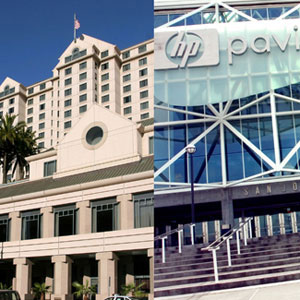Jerry Brown’s plan to dismantle the state’s redevelopment agencies would make things a lot worse for San Jose’s staggering deficit—and eliminate the funding source for the salaries of Mayor Chuck Reed and the San Jose city council.
In his State of the State speech Monday night, Brown repeated his proposal to redistribute the billions of dollars redevelopment agencies generate to help pay for other services and solve the state’s budget crisis. In San Jose, Brown’s plan would have some profound unforeseen consequences.
San Jose’s Redevelopment Agency (SJRA) already spends $12 million per year to help pay for city staff—that’s over and above its own staffing budget. Almost 20 percent of that amount, $2.2 million, pays for the city of San Jose’s executive branch and its staff.
How did that happen, when RDA funds are, by law, reserved for capital projects to revitalize blighted parts of the city?
Executive Director Harry Mavrogenes says the expense is justified by the fact that the mayor and council sit as the city’s RDA board. If the governor succeeds in defunding the agency, the city would have to look elsewhere for that money—or tighten its belt considerably.
That may be exactly what the famously frugal governor has in mind.
Before Redevelopment blew up into a half-billion dollar agency, city government was a fraction of its current size. The SJRA was a funding mechanism that contributed to the corpulent city council bureaucracy’s expansion, in which each member has a staff including policy aides and some even have their own communications directors.
While the governor’s plan contends that money for RDA projects should be going to cops and teachers instead, here as elsewhere, the Redevelopment Agency pretty much created its own revenue. It did so by forming special tax districts through a scheme known as tax-increment financing (TIF).
Critics throughout the state argue that San Jose and other California cities diverted this money and used it to build bureaucratic empires—including generous salaries for elected officials.
{pagebreak}
Mavrogenes says that his agency is also helping the city stay afloat financially. Redevelopment currently covers $27 million in city debt—including $15 million in overhead for the Convention Center and $3 million for the Fourth Street Garage. About $20 million of that debt would be piled onto the city’s deficit for the next fiscal year, he says. Meanwhile, he says, none of the money Brown’s budget would recoup after eliminating RDAs would help San Jose for at least three to five years.
“We’ve issued over $3 billion in bonds over the years that still needs to be paid off to do a lot of this work,” Mavrogenes says. “The money didn’t just appear magically.”
Another noticeable hole that would come as a result of Brown’s proposal to take $1.7 billion from the state’s RDAs would be seen on the 14th floor of City Hall, which is currently occupied by the SJRA. In addition to losing the $12 million per year that the redevelopment agency puts into the general fund, the city would lose out on $1.3 million in rent.
Councilmember Pete Constant says the only way the city could recoup that money is to slash other services. “We would have to make more cuts to the city budget, because the redevelopment agency is a major tenant of the building,” he says.
The Big Give Back
As SJRA’s defenders have done for decades, Mavrogenes points out that SJRA rescued downtown San Jose.
High-profile projects such as the Fairmont Hotel, HP Pavilion and the Convention Center pumped economic life into what was a decrepit city core. It has also funded neighborhood improvements, downtown promotions, public art, freeways and a proliferation of Italian restaurants and chop houses.
“Would people have moved into downtown if that stuff wasn’t there?” Mavrogenes asks incredulously. “Downtown was a ghost town.”
In addition to the much-touted quality of life issues, Mavrogenes says SJRA also delivered a return on investment. According to SJRA numbers, two projects that the agency helped build—the Adobe headquarters downtown and Cisco Systems’ massive campus—created almost 19,000 permanent jobs and tens of thousands of indirect jobs.
In the last two years, companies such as Brocade, SunPower and Maxim Integrated Products expect to
{pagebreak}
create more than 4,000 new jobs in the area in return for $5 million in agency investments that helped erect a grove of office towers in north San Jose,
As a result of all of these projects, San Jose has become one of the most powerful RDAs in the state and is projected to bring in $187 million in revenue this year, second only to Los Angeles.
As elsewhere in the state, a growing number of RDA critics say it’s time for reform—if not outright elimination. One city official called the SJRA “a legalized ponzi scheme” that bases too much of its numbers on speculation.
Adding to its woes, last year, the SJRA recouped 8 percent less than expected for the areas it bonded. County Tax Assessor Larry Stone says the market is rebounding, but not when it comes to certain RDA pet projects.
“There’s not a lot of retail there and a lot of those high-rise condos haven’t filled up,” Stone points out.
In recent years, he says, San Jose’s redevelopment agency has focused too much on big projects. Still, Stone sees a role for redevelopment agencies, especially San Jose’s.“My position is: There are major reforms that need to be done,” Stone says. “Amend it, don’t end it. “
A poll released by the Public Policy Institute reports that two-thirds of Californians are in favor of shutting down RDAs and giving the money back to the state to pay off debt before redistributing that money to county general funds and school districts.
Stone says public opinion has turned against redevelopment agencies mainly because of gross abuses of the redevelopment process in Southern California.
City officials in Los Angeles recently took action to secure $1 billion in redevelopment projects. That resulted in State Controller John Chiang launching a state tour to conduct audits of 18 RDAs, San Jose’s included.
Mavrogenes says San Jose has chosen to delay any action in securing bond money because the state Legislature isn’t poised to make any immediate decision.
Meanwhile, the agency is in the feverish process of selling off parcels of land in efforts to accumulate money to bond with third-party sources, such as Oakland Athletics owner Lew Wolff, who would like to relocate his team to San Jose. The clock is ticking.
Last week, Reed and eight other mayors met with Brown about RDA cuts. His message was simple: Cut back on other programs now or get rid of RDAs. Looking at the mayors, the governor asked: “If not you, who?”
For Reed, the message was both figurative and literal.

 Food & Wine Events: Feb. 2-9
Food & Wine Events: Feb. 2-9  Review: Scratch
Review: Scratch 






